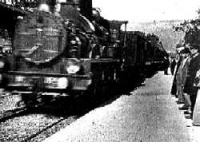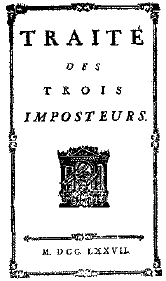Nonfiction
From The Art and Popular Culture Encyclopedia
|
"She remembered that on her husband’s left shoulder, almost on the neck, there used to be one of those small, almost imperceptible, but ineffaceable birthmarks. Martin wore his hair very long, it was difficult to see if the mark were there or not. One night, while he slept, Bertrande cut away a lock of hair from the place where this sign ought to be—it was not there!" --Martin Guerre, from Celebrated Crimes (1839-41) by Alexandre Dumas |

Illustration: screen shot from L'Arrivée d'un train en gare de La Ciotat
|
Related e |
|
Featured: |
Non-fiction or nonfiction is one of the two main divisions in narrative. Non-fiction is a story based on real life facts and information . Non-fiction is a narrative, account, or other communicative work whose assertions and descriptions are believed by the author to be factual. These assertions and descriptions may or may not be accurate, and can give either a true or a false account of the subject in question; however, it is generally assumed that authors of such accounts believe them to be truthful at the time of their composition or, at least, pose them to their audience as historically or empirically true. Reporting the beliefs of others in a non-fiction format is not necessarily an endorsement of the ultimate veracity of those beliefs, it is simply saying it is true that people believe them (for such topics as mythology, religion). Non-fiction can also be written about fiction, giving information about these other works. Non-fiction need not necessarily be written text, since pictures and film can also purport to present a factual account of a subject.
Contents |
Types
Essays, journals, documentaries, histories, scientific papers, photographs, biographies, textbooks, blueprints, technical documentation, user manuals, diagrams and some journalism are all common examples of nonfiction works, and including information that the author knows to be untrue within any of these works is usually regarded as dishonest. Other works can legitimately be either fiction or nonfiction, such as journals of self-expression, letters, magazine articles, and other expressions of imagination. Although they are mostly either one or the other it is possible for there to be a blend of both. Some fiction may include nonfictional elements. Some nonfiction may include elements of unverified supposition, deduction, or imagination for the purpose of smoothing out a narrative, but the inclusion of open falsehoods would discredit it as a work of nonfiction.
Distinctions
The numerous literary and creative devices used within fiction are generally thought inappropriate for use in nonfiction. They are still present particularly in older works but they are often muted so as not to overshadow the information within the work. Simplicity, clarity and directness are some of the most important considerations when producing non-fiction. Audience is important in any artistic or descriptive endeavour but it is perhaps most important in nonfiction. In fiction, the writer believes that readers will make an effort to follow and interpret an indirectly or abstractly presented progression of theme, whereas the production of nonfiction has more to do with the direct provision of information. Understanding of the potential readers' use for the work and their existing knowledge of a subject are both fundamental for effective nonfiction. Despite the truth of nonfiction it is often necessary to persuade the reader to agree with the ideas and so a balanced, coherent and informed argument is also vital. Mark Twain said, paraphrased: "The difference between fiction and nonfiction is that fiction must be absolutely believable."
History
Cave paintings, from 32,000 years ago, are one of the oldest forms of human expression and could be either a record of what prehistoric man caught on hunting trips, i.e. non-fiction, or alternately a story expressing what they would like to catch on future occasions, i.e. fiction. If cave art is ambiguous on this matter, cuneiform inscriptions which hold the earliest writings seem to have been initially for nonfiction. Some of the most important symbols in cuneiform represent goods such as oxen and barley and the earliest texts in existence deal with the buying and selling of these items and other economic matters, although fiction was not far behind.
Much of the nonfiction produced throughout history is of a mundane and everyday variety such as records and legal documents which were only ever seen by a few and are of little interest except to the historian. It probably easily outweighs fiction in the amount that has been produced but fiction generally has a longer lasting appeal as it is designed for entertainment and even rather mediocre fiction survives a few generations. The nonfiction that transcends its original time tends to be viewed as either exceptionally well made or perfectly embodying the ideas, manners and attitudes of the time it was produced, even if it was not actually created as history.
At any one time in history there is the body of nonfiction work which represents the currently accepted truths of the period. Although these nonfiction works may be contradictory they form a corpus that is regularly being altered with better explanations of ideas or with new facts. A good example of this are the nonfiction scientific books and papers which explain the science of the day but are then superseded by better representations. Textbooks for explaining and teaching the current state of scientific and historical knowledge are regularly updated and manuals for operating new technology are also produced.
Types of nonfiction
- Almanac
- Autobiography
- Biography
- Blueprint
- Book report
- Creative nonfiction
- Design document
- Diagram
- Diary
- Dictionary
- Non-fiction films (e.g. documentaries)
- Encyclopedia
- Essay
- History
- Journal
- Journalism
- Letter
- Literary criticism
- Memoir
- Natural history
- Philosophy
- Photograph
- rants and incendiary tracts
- Science book
- Scientific paper
- Statute
- Textbook
- Travelogue
- User manual
See also


